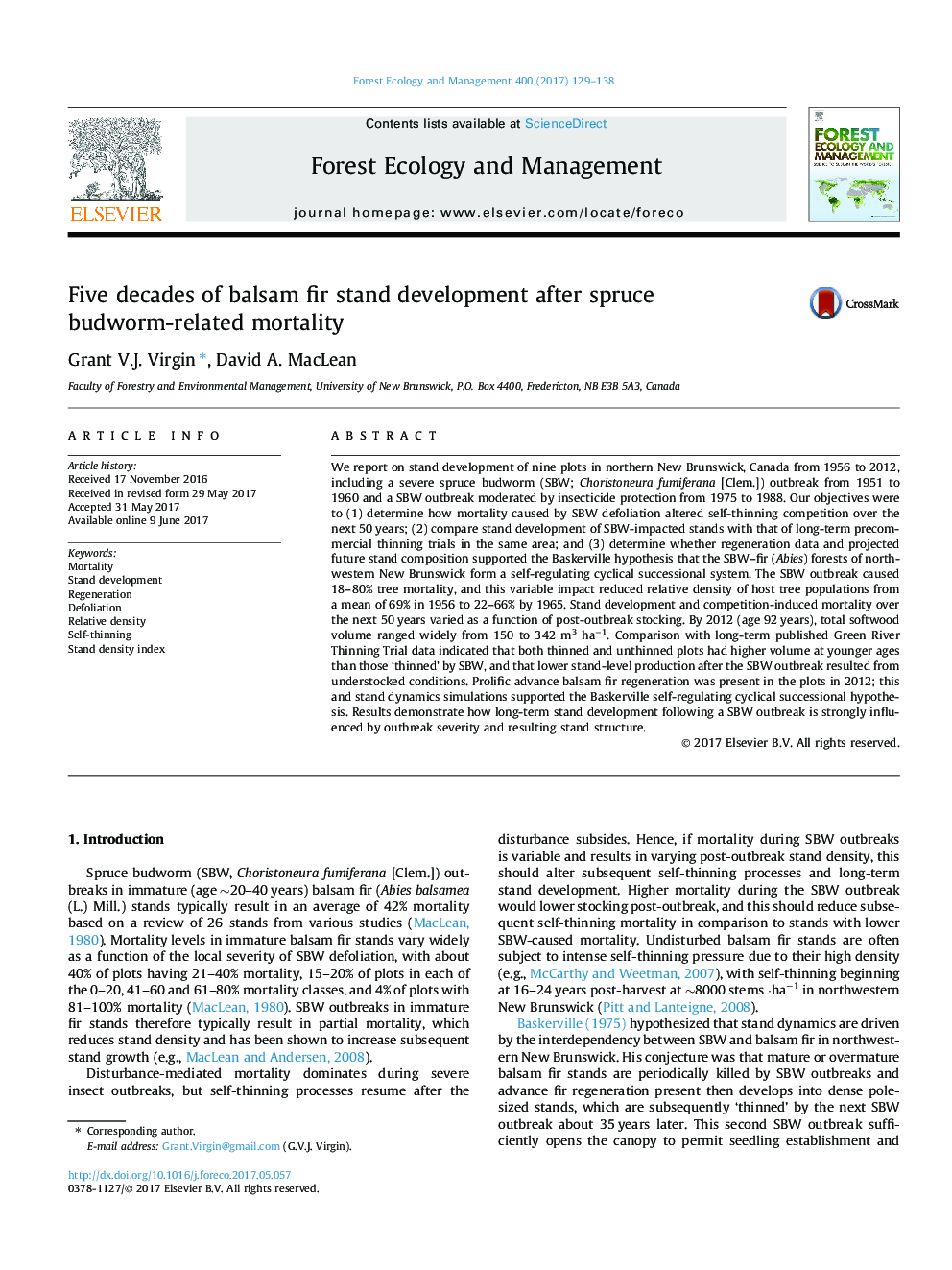| Article ID | Journal | Published Year | Pages | File Type |
|---|---|---|---|---|
| 6459217 | Forest Ecology and Management | 2017 | 10 Pages |
â¢Five decades of stand development in spruce budworm affected plots in New Brunswick.â¢Stand development and self-thinning patterns varied based on post-outbreak stocking.â¢Thinned and unthinned plots had more volume at younger ages than budworm plots.â¢Lower stand-level production post-budworm outbreak resulted from understocking.â¢Budworm and balsam fir forests form a self-regulating cyclical successional system.
We report on stand development of nine plots in northern New Brunswick, Canada from 1956 to 2012, including a severe spruce budworm (SBW; Choristoneura fumiferana [Clem.]) outbreak from 1951 to 1960 and a SBW outbreak moderated by insecticide protection from 1975 to 1988. Our objectives were to (1) determine how mortality caused by SBW defoliation altered self-thinning competition over the next 50Â years; (2) compare stand development of SBW-impacted stands with that of long-term precommercial thinning trials in the same area; and (3) determine whether regeneration data and projected future stand composition supported the Baskerville hypothesis that the SBW-fir (Abies) forests of northwestern New Brunswick form a self-regulating cyclical successional system. The SBW outbreak caused 18-80% tree mortality, and this variable impact reduced relative density of host tree populations from a mean of 69% in 1956 to 22-66% by 1965. Stand development and competition-induced mortality over the next 50Â years varied as a function of post-outbreak stocking. By 2012 (age 92Â years), total softwood volume ranged widely from 150 to 342 m3 haâ1. Comparison with long-term published Green River Thinning Trial data indicated that both thinned and unthinned plots had higher volume at younger ages than those 'thinned' by SBW, and that lower stand-level production after the SBW outbreak resulted from understocked conditions. Prolific advance balsam fir regeneration was present in the plots in 2012; this and stand dynamics simulations supported the Baskerville self-regulating cyclical successional hypothesis. Results demonstrate how long-term stand development following a SBW outbreak is strongly influenced by outbreak severity and resulting stand structure.
